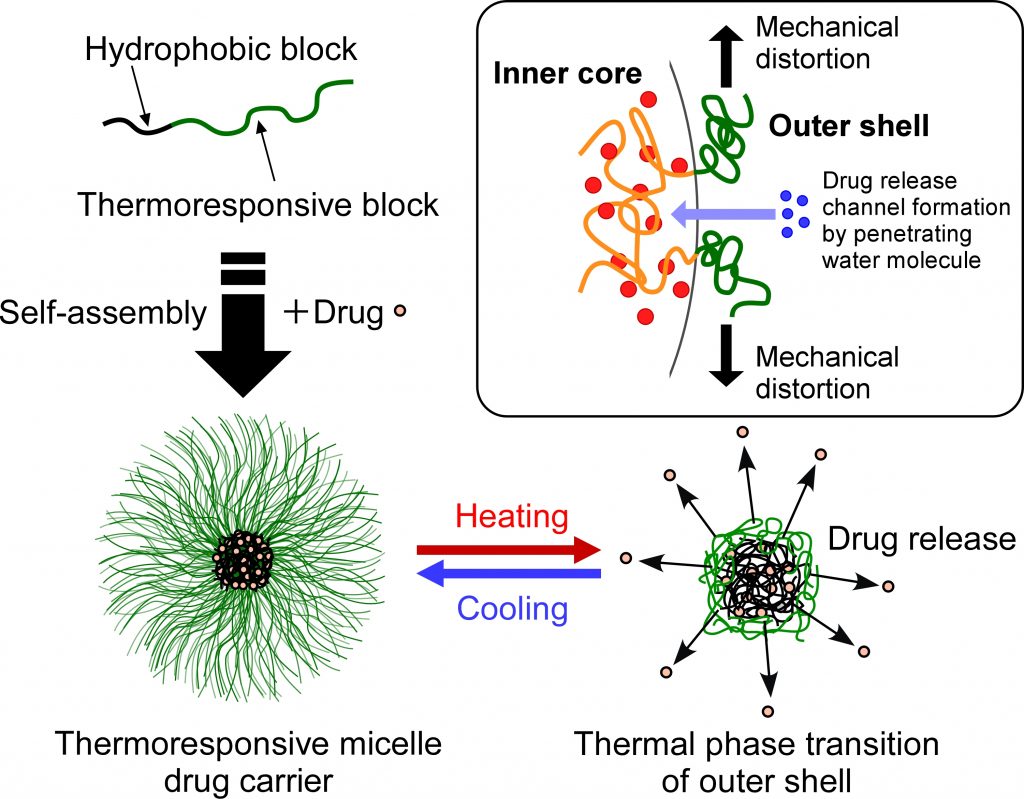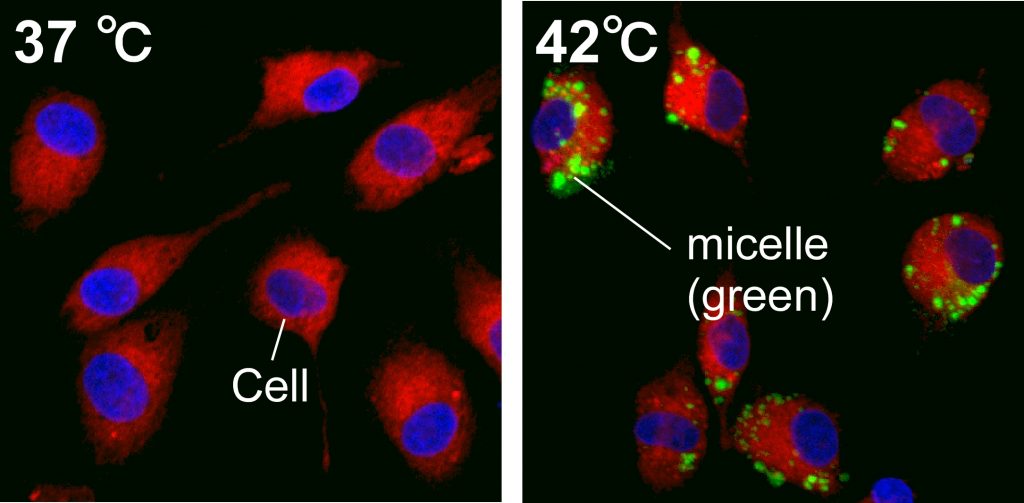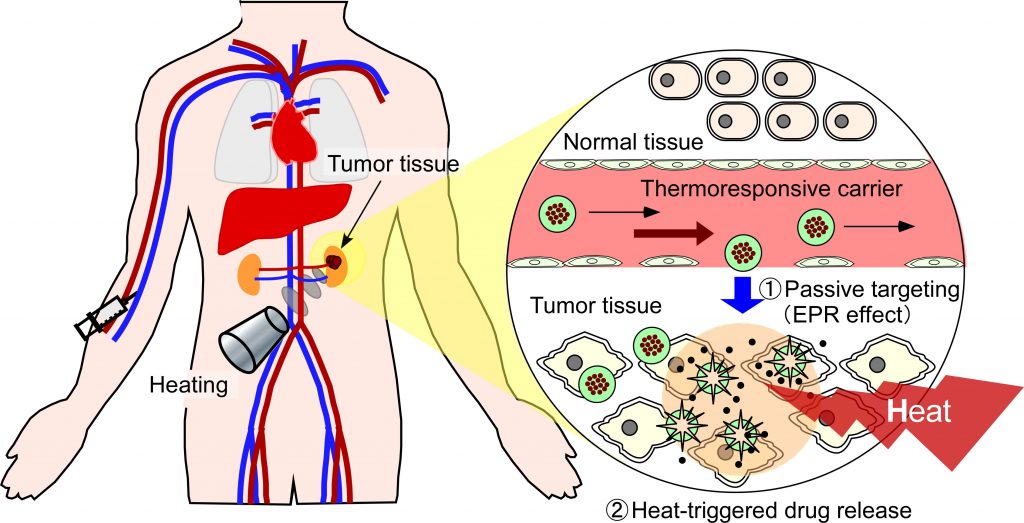Polymeric micelle-drug carrier system
In cancer chemotherapy, the blood concentration of administered drug is reduced in a short time due to metabolism and excretion, and is difficult to maintain a long-term therapeutically effective concentration. In addition, since drugs have no selectivity for specific tissues or organs, there are many cases where significant side effects occur on normal tissues. To resolve this problem, we aim to establish a safe drug treatment system without severe side effects by selectively applying drugs to target sites using synthetic polymers as carriers for drugs and genes.
Our group studies the application of polymeric micelles as drug carriers. Polymeric micelles are formed by self-assemblies of block copolymers with heterogeneous hydrophilic and hydrophobic blocks. Nano-scaled polymeric micelle (10-100 nm) has a clear bilayer structure outer shell for controlling biodistribution and inner core for physical or chemical drug encapsulation.
Solid cancer tissue is characterized by the tendency for nanoparticles to accumulate because of its highly leaky vascular structure and the immature lymphatic system (Enhanced Permeability and Retention effect, EPR effect). Utilizing the feature, the development of nano-sized particulate formulations containing anticancer drugs is being widely studied. Nowadays, anticancer drug-loaded polymeric micelles with biocompatible polyethylene glycol-based shells have a high accumulation at solid tumors via the EPR effect, and demonstrate excellent anticancer activity.
Currently, we focus on the development of intelligent carriers that control the on-off drug release using physical energy (heat, electromagnetic wave, or ultrasound). After accumulating drug carrier at tumor tissues via EPR effect, irradiated energy triggered to initiate drug release from the carrier. It is expected that side effects will be further reduced and therapeutic efficiency in affected areas will be dramatically improved.
Our group has developed stimuli-responsive micelle carriers. The micelles have thermoresponsive shells comprising poly(N-isopropylacrylamide) copolymers. The intelligent drug carrier changes its structure and physical property above a specific temperature, and can accelerate drug release rate and/or is actively uptaken inside cells.
Combined with cancer hyperthermia (local hyperthermia) that heats the vicinity of the cancer to around 42 C, cancer can be effectively treated by the synergistic effect of heat and drugs.


